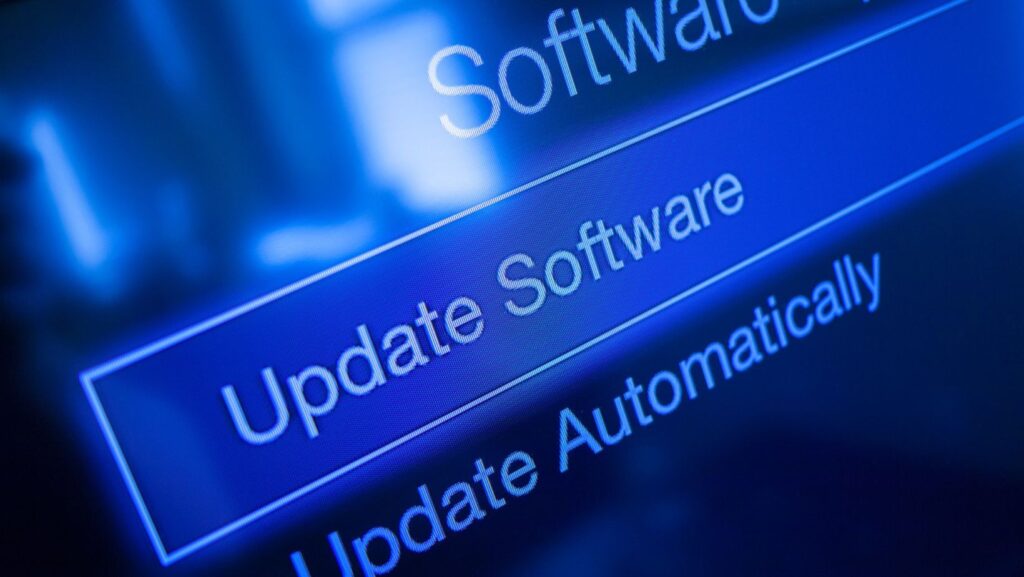Why do the government and other high-profile institutions continue to run outdated infrastructure even in this era of agile and automation advancements? It seems nonsensical that organizations still use archaic languages such as COBOL or obsolete systems like Windows 7. Yet, they do.
Common pragmatic justifications include “if it ain’t broke, don’t fix it” and “updating would cost us a fortune.” Despite the clear benefits of moving to more modern systems, for many organizations, it just doesn’t feel like a priority.
Given the risks, do these rationales make sense?
Using outdated software and legacy systems can cause more than minor inconveniences or public (and private) eye-roll moments. They often exacerbate security threats, contribute to missed business opportunities, or even cost companies a lot in the long run.
Security Vulnerabilities
All systems—modern and old—exist in a vulnerable environment. Cybercriminals and hackers are often skilled coders, programmers, and IT experts.
As part of their role as cybercrime perpetrators, they often seek out vulnerabilities, exploit them, and may even publicly catalog them. As specific vulnerabilities become common knowledge, they serve as low-hanging fruit for other hackers to gain access and cause problems in a system.
RISK: Ransomware Attacks
Software updates work to address known system weaknesses and patch vulnerabilities. Outdated systems cannot often be patched efficiently and effectively.
Lower patching cadence leads to a higher risk of exploitation. Data indicates that organizations with “D” and “F” graded patching cadences are seven times more likely to experience a ransomware attack.
Ransomware attacks can have widespread consequences to an organization, including loss of system function, public embarrassment, and large financial losses.
RISK: Credential Stuffing and Privilege Escalation
Outdated encryption protocols (such as TLS 1.0, SSL 3.0, or SHA-1) and a lack of multi-factor authentication (MFA) or other modern identity management create the perfect opportunity for threat actors to gain access to accounts using login information, later perpetuating credential stuffing or privilege escalation attacks.
RISK: Compliance Issues
Outdated systems threaten compliance with data protection frameworks, including GDPR, HIPAA, PCI-DSS, and NIST 800-53. Noncompliance can result in extremely steep monetary penalties, along with regulatory scrutiny and (perhaps even more damaging) a lot of questions and potential breakdown of stakeholder trust.
Operational Inefficiency
Using legacy or outdated software affects efficiency at both the individual employee and organizational levels. What begins as a small productivity irritation (such as waiting for an application to load) can lead to systemic inefficiency more quickly than you may think.
RISK: Decreased Productivity
The level of manual patching that is often necessary in environments that lack the capacity for automated updates often consumes valuable engineering resources that could otherwise be allocated to innovation. Slow or unreliable software also increases MTTR and can contribute to cognitive fatigue for employees navigating outdated interfaces or unsupported plugins.
RISK: Integration Difficulties
Lack of integration support from modern software ecosystems isolates outdated systems. Must-have technological developments such as cloud-based infrastructure, AI-driven analytics, IDPS, and SIEM become almost inaccessible.

RISK: Lack of Support
Deprecated vendor support creates further instability as organizations become dependent on internal expertise that is increasingly rare and expensive to maintain.
Business and Strategy
Relying on outdated software often leads to technical debt. It also leads to strategic debt.
RISK: Scalability Limitations
Legacy systems often have scalability ceilings, which, in turn, force teams to build temporary, piecemeal solutions that accentuate fragility. Over time, stopgaps solidify into structural dependencies, making modernization more complex and costly.
RISK: Talent Shortages
Compounding scalability limitations is a shrinking talent pool. As contemporary developers migrate toward modern languages, frameworks, and paradigms, fewer professionals possess the fluency to maintain obsolete systems. This scarcity inflates labor costs and erodes institutional resilience.
RISK: Client Skepticism
In an industry where uptime, data protection, and technological sophistication are an essential part of brand acceptance, even one breach or failure (even if it’s not directly caused by the legacy software itself) can permanently change the trajectory and future credibility.
Risk Mitigation
Use a VPN.
Most of the ways an organization rationalizes contributing to outdated software are rooted in truth. Many organizations truly do not have the budget or resources to modernize.
A high-quality VPN provider encrypts network traffic end-to-end. Data in transit stays inaccessible, even across unsecured or public networks. When working with source code repositories, staging environments, or assets that include sensitive client information, that extra layer of protection can mitigate the risks associated with outdated infrastructure.
A VPN can also create secure connections between geographically distributed teams. That means better privacy and data integrity while still maintaining accessibility.
Bottom Line
Outdated software often works fine until it catastrophically fails. The logic of “If it ain’t broke, don’t fix it”, however, doesn’t hold up to the reality of modern cybersecurity threats and competitive business practices.
Modernization is ideal. However, adding extra mitigation layers is imperative for those unable to transition immediately. Pairing rigorous patch management with secure access tools, such as a VPN, can significantly reduce exposure.

